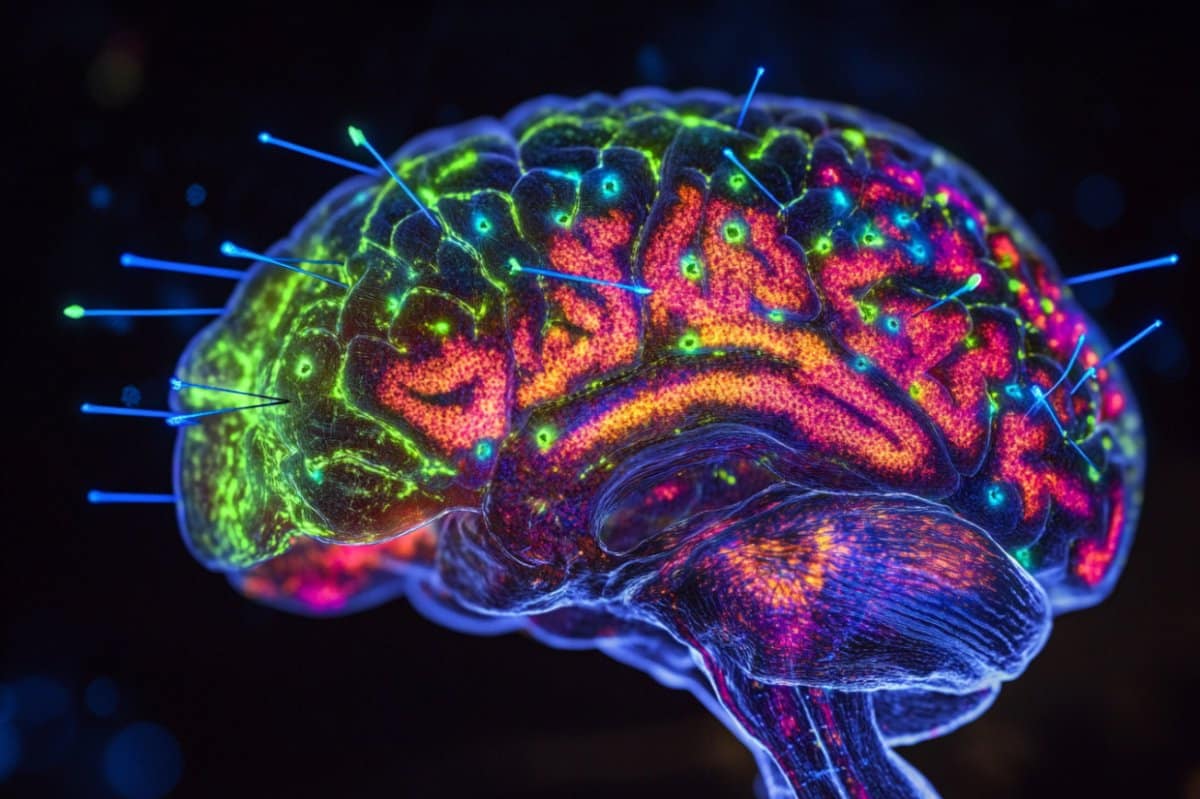Summary: A new scientific review maps the cellular and molecular mechanisms behind memory formation, consolidation, generalization, and updating, revealing how memories are stored, altered, and even manipulated in the brain.
Key breakthroughs now allow scientists to visualize and activate specific neurons involved in memory, offering deeper insight into how learning occurs and how fear memories may become overgeneralized in disorders like PTSD.
The review explains how neurons are selected for memory encoding, how memories shift from the hippocampus to the cortex, and how reactivated memories can be reshaped. These insights could lead to targeted therapies that modify emotional memory traces without erasing core experiences.
Key Facts:
- Memory Engrams: Memories are stored in sparsely distributed neurons that undergo lasting molecular changes.
- Generalization Risk: When memory specificity fades, overgeneralization can drive PTSD and anxiety.
- Modifiable Traces: Reactivated memories can be updated, offering potential for emotional rewiring in therapy.
Source: Genomic Press
In a comprehensive Genomic Press thought leaders invited review published today, researchers have mapped out the dynamic cellular mechanisms that allow the brain to form, consolidate, generalize, and update memories.
This scientific synthesis offers valuable insights into how memories are encoded in the brain and how they can change over time, with substantial implications for conditions like post-traumatic stress disorder (PTSD).

The Hunt for Memory Traces
One of neuroscience’s most fundamental questions is how the brain can store, generalize, and update memories. Memories are believed to be stored through biophysical and molecular changes in neuronal ensembles called engrams, distributed across different brain regions.
These engrams are sparsely distributed populations of neurons that undergo enduring physical or chemical changes during learning, creating a biological representation of our experiences.
“The search for the mechanistic substrates of memory, what Richard Semon called the ‘engram,’ has continued into the present day,” explains Professor Zhe-Yu Chen from Shandong University, the corresponding author of the review.
“Our understanding of memory engrams has evolved from a theoretical abstraction to a biological reality through modern neuroscience techniques.”
Neuroscience Breakthroughs Enable Memory Visualization
The review details how recent technological advances have transformed our ability to study memory. Modern techniques now allow scientists to label, track, and even manipulate the specific neurons involved in forming and retrieving memories.
“Advanced methods combining immediate early gene-based tagging with optogenetic manipulation have enabled the identification and control of neuronal ensembles encoding specific memories,” notes Dr. Shuai-Wen Teng, co-author of the review.
“This technological breakthrough has allowed us to observe memory in action at the cellular level.”
Scientists can now visually identify which neurons activate during memory formation and retrieval. More remarkably, they can artificially activate these neurons to induce memory recall, even in the absence of normal sensory cues. This means researchers can effectively “turn on” a memory by stimulating the right cells.
Memory Allocation and Formation
The review explains how neurons are selected to become part of a memory trace during the initial encoding process. This selection isn’t random – neurons with higher excitability at the time of learning are more likely to be recruited into the memory ensemble.
“It’s like a competition among neurons,” Dr. Teng continues.
“Cells with elevated baseline excitability exhibit preferential activation during learning and are disproportionately incorporated into memory-encoding ensembles.”
This process is regulated by a transcription factor called CREB, which enhances both intrinsic excitability and dendritic spine density. When a neuron has higher CREB activity, it becomes more likely to be recruited into a memory engram.
How Memories Change Over Time
One fascinating aspect of the review covers how memories transform as they consolidate. New memories initially depend on the hippocampus but gradually transition to relying more on the cortex through a process called systems consolidation.
“Following initial synaptic stabilization, memories undergo system consolidation, transitioning from hippocampal dependence to medial prefrontal cortex-dependent storage over days to years,” explains Dr. Chen.
“This allows hippocampal engrams to retain episodic, context-specific details, while medial prefrontal cortex ensembles encode more schematic, generalized representations.”
This natural process explains why memories often become more generalized over time, losing specific details while preserving core concepts. This fundamental brain mechanism supports learning but can also contribute to conditions like PTSD when fear memories become overgeneralized.
Memory Generalization and Anxiety Disorders
The researchers detail how memory generalization, while an adaptive process for applying past learning to new situations, can become maladaptive in conditions like PTSD and anxiety disorders.
The hippocampus plays a crucial role in maintaining memory specificity. When this function is compromised, perhaps due to stress exposure or altered signaling pathways, memories can become overgeneralized, leading to inappropriate fear responses.
“Fear overgeneralization represents a maladaptive behavioral response to nonthreatening stimuli or neutral environments,” Dr. Chen explains.
“This phenomenon is a hallmark feature of anxiety spectrum disorders such as generalized anxiety disorder, panic disorder, and post-traumatic stress disorder.”
The researchers outline several mechanisms that drive memory generalization, including stress-induced changes in hippocampal and amygdala circuits. Understanding these mechanisms could lead to targeted interventions for anxiety disorders.
Memory Updating and Modification
The review also explores how existing memories can be updated with new information. When memories are reactivated, they become temporarily malleable, allowing them to incorporate new data or emotional contexts.
“Memory updating is a fundamental process that allows organisms to adapt to new information, modify existing knowledge, and integrate novel experiences with pre-existing memories,” says Dr. Teng.
“The valence associated with the hippocampal dentate gyrus memory engram could be bidirectionally reversed.”
This suggests exciting possibilities for treating emotional disorders by modifying the emotional associations of traumatic memories. Could therapies be developed that specifically target memory engrams to reduce their emotional impact without erasing the memories themselves? This remains an active area of research with significant clinical potential.
The Future of Memory Research
The review outlines several outstanding questions that researchers are still working to answer. How exactly do nuclear changes during memory formation connect to the reinforcement of specific synaptic connections? What mechanisms drive neurons to join or leave engram networks during different memory processes? How does the brain maintain the delicate balance between memory stability and flexibility?
“Our knowledge of the intrinsic mechanism underlying the offline activation of memory engrams in an unconscious state is totally lacking,” notes Dr. Chen.
“Understanding how memory representations drift over time depending on our experiences and internal states is a critical area for future investigation.”
About this memory and PTSD research news
Author: Ma-Li Wong
Source: Genomic Press
Contact: Ma-Li Wong – Genomic Press
Image: The image is credited to Neuroscience News
Original Research: Open access.
“Dynamic memory enqrams: Unveiling the celular mechanisms of memory encoding, consolidation, generalizaton, and updating in the brain” by Zhe-Yu Chen et al. Brain Medicine
Abstract
Dynamic memory enqrams: Unveiling the celular mechanisms of memory encoding, consolidation, generalizaton, and updating in the brain
One of the fundamental questions of neuroscience is how the brain can store, generalize, and update memories.
Memories are believed to be stored through biophysical and molecular changes in neuronal ensembles called engrams, which are distributed across different brain regions.
The dynamic changes that occur in engram cells during the encoding, consolidation, generalization, and updating of memory are still not fully understood.
However, recent advancements in techniques for labeling and manipulating neural activity have allowed for investigation of the dynamic changes of memory engrams across different memory processes.
Understanding engram dynamics may inform interventions for posttraumatic stress disorder and memory disorders.
In this review, we summarize the recent progress in dynamic memory engrams across memory encoding, consolidation, generalization, and updating, shedding new light on the mechanisms underlying engram formation and maturation.







